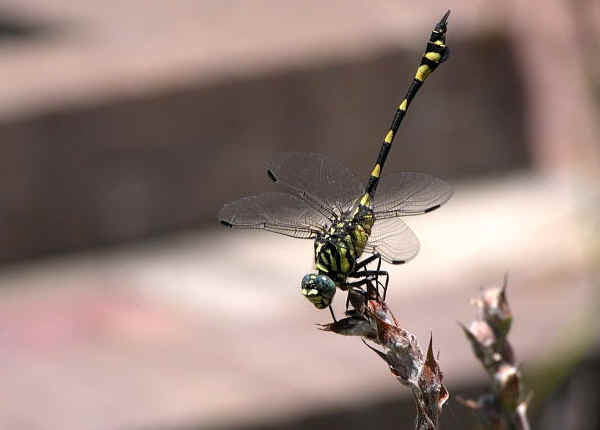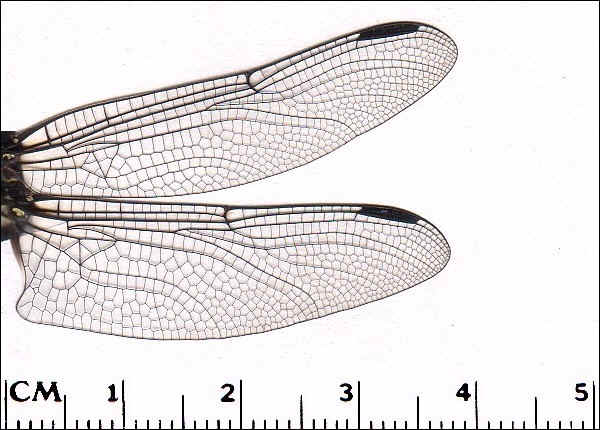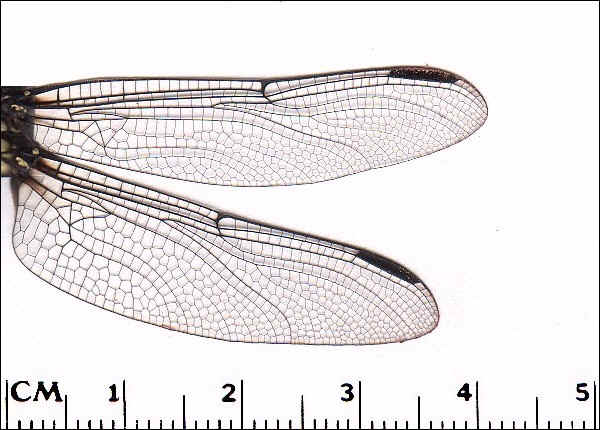|
| |
- This page contains pictures and information about Australian Tiger Dragonflies that we found in the Brisbane area, Queensland, Australia.
-
 - Male, body length 65mm
-
- Australian Tigers are yellow and black in colour. The males are with broad flaps
on clubbed abdomen end. Australian Tigers are common on large ponds and slow
flowing waters.
-
  -
- We found Australian Tigers easily on Bulimba Creek and Moolabin Creek, the two
sites that we visited most for dragonflies. The Australian Tiger always
occupy the best perching position, which is usually the emergent vegetation or
fallen branches in the pool or slow running water, where the dragonfly can
oversee a large piece of water as his territory.
-

 -
- The Australian Tiger will drive away any intruders, i.e., another male of his
own species. The Australian Tiger will ignore any damselfly and LIBELLULIDAE.
If it is an Australian Emerald or Slender Tigerlet,
the Australian Tiger may follow it for one or two meters to confirm it is not
another Tiger. If it comes another male Tiger, the dragonfly will chase it and both
will disappear from our eyes sight, and he will come back a few seconds later.
If it is disturbed, such as come too close to take the photo, it flies away and seems never come back, or at least half an hour, the
longest time that we had waited.
-
  -
- Sometime we saw a Australian Tiger perches on a high point in open
forest, hunting for prey.
-
  -

 -
-

 - Female, body length 65mm
-
  -
-
The above pictures show the female Australian Tigers. Male and female look the same
except the female has the thicker abdomen and round wings base. We saw
female lays eggs by quickly dip her abdomen tip onto the water surface, closely
guarded by a male.
-
- Female hunts near ponds when not laying eggs.
-
-
 - Male Australian Tiger wings
-
 - Female Australian Tiger wings
-
- Notice that the Tiger wings have all the triangles cells crossed veins.
-

 -


- Reference:
- 1. The Australian Dragonflies - CSIRO, Watson, Theisinger &
Abbey,1991, p212.
- 2. A
Field Guide to Dragonflies of South East Queensland - Ric Nattrass,
2006, p68.
- 3. The
Complete Field Guide to Dragonflies of Australia - CSIRO, GŁnther
Theischinger and John Hawking, 2006, p160.
Back to Top
[ Up ]
| |
|





















